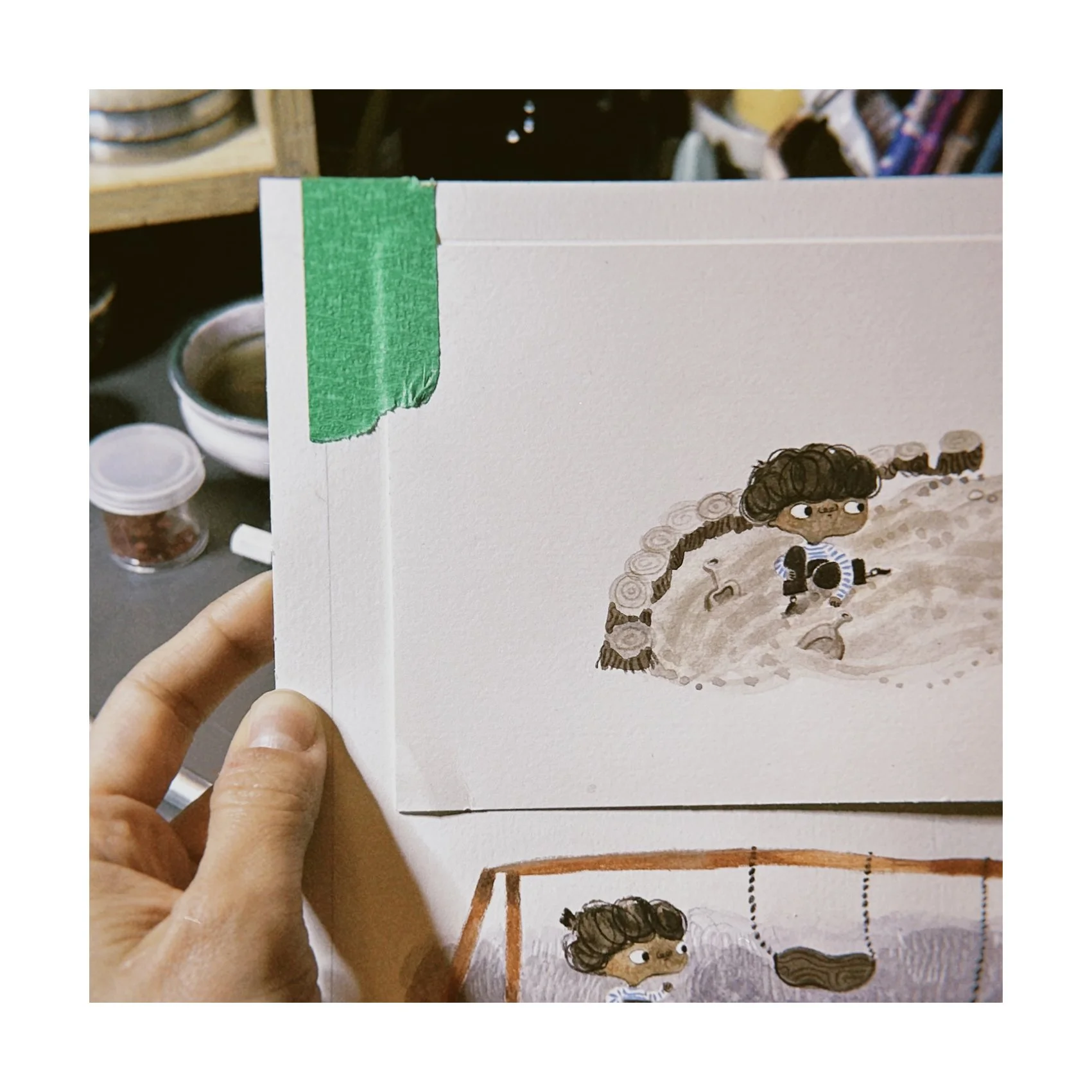Long Beginnings: The multiple ways to start a picture book and something about Mondays.
Embracing the risk of judgment, I'll say this out loud: I love Mondays.
I love Mondays because they bring a sense of calm. Each week gives me the same feeling that New Year's does. Fortunately, my life as a freelancer allows me to have a semi-routine, letting me start things differently each time. Something that happens with picture book projects too.
The thing about books is that they have a long different beginning. For me, the start isn't truly over until I'm painting the final pieces. Everything that comes before that is part of the process of beginning. I can be halfway through a storyboard and still say: "I'm starting a new project."
They start even before the pencil touches the paper, for example:
Matías' journey started with a Facebook message when a contact recommended me to someone in search of an illustrator for their book. I shared my portfolio, and the rest followed.
Las fotos de Murci began with an email to a professor (who is also a children’s books author) I had during my master's in literature, back when I had no clue how the book industry worked.
She was very helpful but didn’t have any projects at the time. Two years later, she contacted me with a manuscript in hand and asked if I would illustrate it.
Los Muégano, my first book as author and illustrator (set to be published in early 2026!), began when I saw an Instagram post showcasing Marisol Escobedo's work. It immediately inspired me and brought the characters to life in my mind first—no story, just them.
That's where books start. And within that beginning lies the search for references.
Once a project is underway, I create a mood board on Pinterest of how I imagine the setting of the book and look for references. (I’ve just set up my professional profile to organize it more effectively; you can check it out here.)
I develop the characters—figuring out how they look, how they dress, what they like, where they live. I make decisions knowing they might change as the book unfolds, but I don’t mind, because it still feels like I'm starting.
If the book is written by another author, I then break the text down into pages. If it’s my own, this is when I write the story. Although nobody likes limitations, the industry has certain length guidelines. The most common format is 32 pages, including covers and endpapers, so I keep that in mind when dividing the text. The page count can increase in multiples of 8, but it’s ultimately the editor who decides the book’s final page count (though in my case, there were no restrictions from the publisher).
For this process, I read the text aloud, as if reading it to someone, to feel the natural breaks between pages. At the same time, I visualize and jot down notes about the illustrations that might accompany the text—nothing too detailed, just the broad concept.
Once I’ve divided the text into the designated number of pages, I move on to creating the storyboard. This is one of the most time-consuming (and challenging) stages because it’s where the story takes shape through the illustrations. I decide the perspective for each page, and how the story will unfold visually—whether with double-page spreads, single pages, or panels. I also need to make sure there’s space for the text, ensuring the images align with the narrative and, in essence, retell the story through visuals. As an illustrator, I’m a co-author of the book.
Once the storyboard is approved by the editor, (sometimes) the author, and of course, the illustrator, I move on to defining the color palette. Honestly, this is the part I struggle with the most because it’s not how I usually work. I tend to paint intuitively, letting each color flow as I go along, but that can lead to a palette that’s too monotone or doesn’t quite support the storytelling. So, with a lot of effort and some tips from fellow illustrators, I create a color palette that aligns with the tone of the book.
And that’s when the beginning of the project comes to an end. From there, I move on to the final stage: painting the finals.
I see the cover, back cover, and endpapers as part of this final process. They’re some of the last elements I work on because, no matter how much I plan, the painting process always brings surprises, unexpected ideas, details the book calls for, or even a color that wasn’t originally in the palette. That’s why I save them for the end.
Even though there’s a “traditional way” to do this, every picture book has its own process.
And every illustrator has its own way of doing it as well.
I couldn't leave out the classic reminder: the most important thing about starting a project is simply to start.
I left out some of the more tedious aspects of starting a picture book, but it's important to consider things like negotiating the illustrator's payment with the publisher, reviewing and signing the contract, and setting deadlines for delivery and publication.
This free palette generator is a great help when choosing the colors for a book.
Additionally, The Interaction of Color by Josef Albers was invaluable in deepening my understanding of color and how we perceive it.
Thank you for taking the time to read and support my work!
I’d love to hear how you handle the start of new years, new weeks, or new projects. Share your thoughts in the comment section below!













